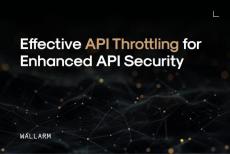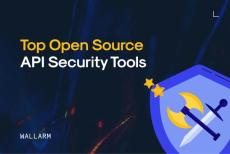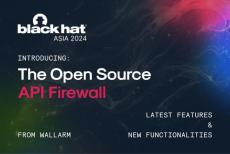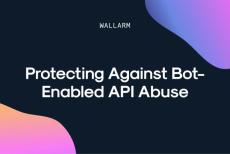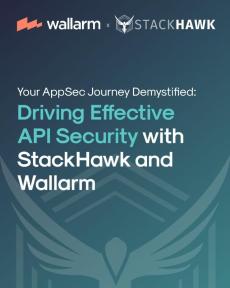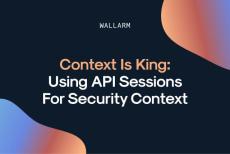|
By Wallarm
APIs are the backbone of modern digital ecosystems, but their misuse can expose systems to cyber threats. Effective API throttling not only optimizes performance but also acts as a critical defense mechanism against abuse, such as denial-of-service attacks. Discover how this powerful strategy enhances API security and safeguards your organization’s data in an interconnected world.
|
By Wallarm
The modern world relies on Application Programming Interfaces (APIs). They allow applications to communicate with each other, servers, and consumers to facilitate data sharing and simplify application development. Without them, the internet would be unrecognizable. However, APIs also present a considerable risk to organizations. If left unsecured, they can be a gateway for attackers to access critical data and services. Protecting APIs is extraordinarily important, but it can be expensive.
|
By Wallarm
Recent advances in AI technologies have granted organizations and individuals alike unprecedented productivity, efficiency, and operational benefits. AI is, without question, the single most exciting emerging technology in the world. However, it also brings enormous risks. While the dystopian, AI-ruled worlds of sci-fi films are a long way off, AI is helping cyber threat actors launch attacks at a hitherto unknown scale and level of sophistication. But what are AI-powered attacks?
|
By Wallarm
APIs have become the backbone of modern digital ecosystems, powering everything from mobile apps to e-commerce platforms. However, as APIs grow in importance, they also become prime targets for malicious actors. Increasingly, bots are being weaponized to exploit vulnerabilities, overwhelm systems, and siphon sensitive data—all without triggering alarms until it’s too late.
|
By Wallarm
API abuse and web application bot attacks are often confused. This is understandable, as both involve automated interactions and are usually executed by bots. Both attack vectors are prevalent; criminals are always eager to disrupt the foundations on which businesses base their operations to achieve their malicious goals and they frequently automate their actions for maximum results.
|
By Wallarm
APIs are the backbone of interconnected applications, enabling organizations to innovate, integrate, and scale rapidly. However, as enterprises continue to expand their digital ecosystems, they often encounter a common and complex challenge: API sprawl. Unchecked, API sprawl can lead to increased security risks, inefficient resource utilization, and the frustrating experience of redundant or hard-to-locate services across teams. Postman details the explosive growth in APIs in their State of API report.
|
By Wallarm
There is no doubt that attackers have shifted their attention to APIs. Wallarm’s API ThreatStats research identifies that 70% of attacks now target APIs instead of Web Applications. While APIs have become the backbone of innovation and connectivity for businesses, they have also introduced a vast attack surface that’s challenging to defend with traditional methods alone.
|
By Wallarm
There’s no doubt that API security is a hot topic these days. The continued growth in API-related breaches and increase in publicized API vulnerabilities has pushed API security to the top of CISO’s lists. The tools in the market for API security still have room for improvement, of course. One of the challenges security practitioners face with APIs is understanding the context in which an attack took place.
|
By Wallarm
API attacks can be costly. Really costly. Obvious financial impacts like legal fines, stolen finances, and incident response budgets can run into the hundreds of millions. However, other hidden costs often compound the issue, especially if you’re not expecting them. This article will explore the obvious and hidden costs of API breaches, their long-term business impacts, and how you can communicate the importance of API security to business stakeholders and decision-makers.
|
By Wallarm
AI and APIs have a symbiotic relationship. APIs power AI by providing the necessary data and functionality, while AI enhances API security through advanced threat detection and automated responses. In 2023, 83% of Internet traffic traveled through APIs, but there was a 21% increase in API-related vulnerabilities in Q3 2024, severely impacting AI. The relationship between AI and APIs expands capabilities while simultaneously increasing potential vulnerabilities.
|
By Wallarm
API session context is key to understanding and mitigating threats. Wallarm configures session identifiers for precise analysis, providing a full picture of attacks and enhancing security insights.
|
By Wallarm
Attackers now exploit APIs for rapid data breaches, taking advantage of a 96% rise in API-related vulnerabilities. Learn how realized risks (breaches) differ from unrealized risks (vulnerabilities) and why APIs are top targets. Stay informed on API security trends.
|
By Wallarm
As we enter the new year, the API security landscape continues to evolve. The volume and complexity of APIs attacks has increased. CISOs and security teams should evaluate their current tools and programs for changes. In this webinar, we bring together CISOs to discuss what changes and threats should be considered in API security programs for the new year. Together, we’ll examine and discuss.
|
By Wallarm
API architects play a critical role in building secure systems by applying proactive controls to prevent vulnerabilities. Their approach focuses on designing APIs with security as a foundation, ensuring stronger protection for every system.
|
By Wallarm
API security is the foundation of AI protection. Learn how LLM risks, sensitive data leaks, and API vulnerabilities impact AI systems.
|
By Wallarm
Learn the critical differences between client-side and server-side API vulnerabilities and their impact: What distinguishes client-side API vulnerabilities from server-side risks. How client-side vulnerabilities originate on the backend but impact end users. Why securing client-side APIs is essential to protect user data from attacks.
|
By Wallarm
EBPF is a Why direct kernel access through EBPF creates critical vulnerabilities. Insights into security issues like CrowdStrike kernel panics and CIUM exploits. How EBPF is emerging as a key attack vector in modern cybersecurity.
|
By Wallarm
Discover the most vulnerable product categories from Q3 and what they mean for API security: A rise in AI and machine learning API exploits, creating new challenges. Why enterprise hardware, DevOps tools, and legacy APIs like XML RPC remain primary targets. How categorizing vulnerabilities provides industry-specific guidance for better protection.
|
By Wallarm
APIs are integral to modern technology but are often highly vulnerable. In this video, we discuss: The significance of a 7.5 CVSS score for common API vulnerabilities. How API design, aimed at accessibility, increases exploitability. Key patterns identified in over 200 API issues analyzed quarterly. Why securing your APIs is essential, no matter the risk level.
|
By Wallarm
API security is a requirement, not an option, but there’s a lot of confusion about what exactly API security is. With so many tools that claim to solve your API security challenges, how can teams make informed choices that align with their actual needs? In this webinar, we will break down the available tools, highlight their strengths and limitations, and offer guidance on selecting the best fit for your security needs. Join us to deepen your understanding of API security layers and learn strategies to effectively protect your API endpoints.
|
By Wallarm
The main task of the run-time application security is to protect modern applications and APIs. In this endeavor the solutions face a number of challenges: Download this whitepaper to learn how Wallarm solves the difficult task of effective application security by relying on AI and machine learning including a unique combination of hierarchical clusterization, statistical n-gram based models, recurrent neural networks and reinforcement learning.
|
By Wallarm
Attack detection is critical for most security solutions, whether we are talking about a load balancer-based (NIDS, WAF), host-based or in-application solutions (HIDS, RASP). Interestingly, regardless of the differences in architecture and data flow, most solutions use similar detection principles and techniques. We will explore how the detection architecture evolved over time and how the new generation of detection logic, such as the architecture implemented by Wallarm, is principally different from that of the legacy solutions.
|
By Wallarm
The following guidelines will help senior stakeholders set strategy to secure modern applications, learning: Applications are the operational mechanism for how a modern enterprise conducts transactions and uses data. Whether internal or customer-facing, apps are critical for your successful business operations. That means securing apps should be a business priority.
|
By Wallarm
In this comprehensive Q2-2023 report, we reflect on an intensified API threat landscape, underlining prevalent threat vectors, susceptible APIs, and new dimensions in the API security arena. With the inclusion of bug bounty analysis and our inaugural API Security Awards, this report provides granular insights into the current state of API security.
|
By Wallarm
This 2022 recap report looks back at the deteriorating API threat landscape, the most prevalent types of threat vectors, the most vulnerable types of APIs, and much more to provide API security and DevOps teams the data-driven insights needed to improve API security in 2023. One of the main take-aways is that the API threat landscape is becoming ever more dangerous. We make this assessment based on the 2022 data, and specifically these four trends.
- January 2025 (4)
- December 2024 (10)
- November 2024 (15)
- October 2024 (15)
- September 2024 (16)
- August 2024 (9)
- July 2024 (7)
- June 2024 (5)
- May 2024 (4)
- April 2024 (4)
- March 2024 (7)
- February 2024 (3)
- January 2024 (5)
- December 2023 (2)
- November 2023 (5)
- October 2023 (3)
- September 2023 (11)
- August 2023 (8)
- June 2023 (2)
- May 2023 (1)
- April 2023 (2)
- March 2023 (5)
- February 2023 (1)
- January 2023 (2)
Security and DevOps teams choose Wallarm to discover all cloud-native APIs and legacy web applications running in their environment, and to detect & respond to threats against them.
Whether you need to protect your brand-new cloud-native APIs or your legacy web apps, Wallarm API Security platform delivers all the capabilities to secure your business against emerging threats.
Comprehensive Protection for APIs and Web Applications:
- Coverage: Protect all your internal and public-facing APIs & web applications regardless of protocol across your entire infrastructure to ensure comprehensive protection.
- Detection: Identify, consolidate and prioritize advanced risks – including OWASP Top-10 risks, API-specific threats, and API abuse – to improve security team effectiveness and reduce workload.
- Response: Assess and remediate any weaknesses which expose you to attack and automatically add new against any further breaches.
Protect Apps in a Cloud-Native Era.


